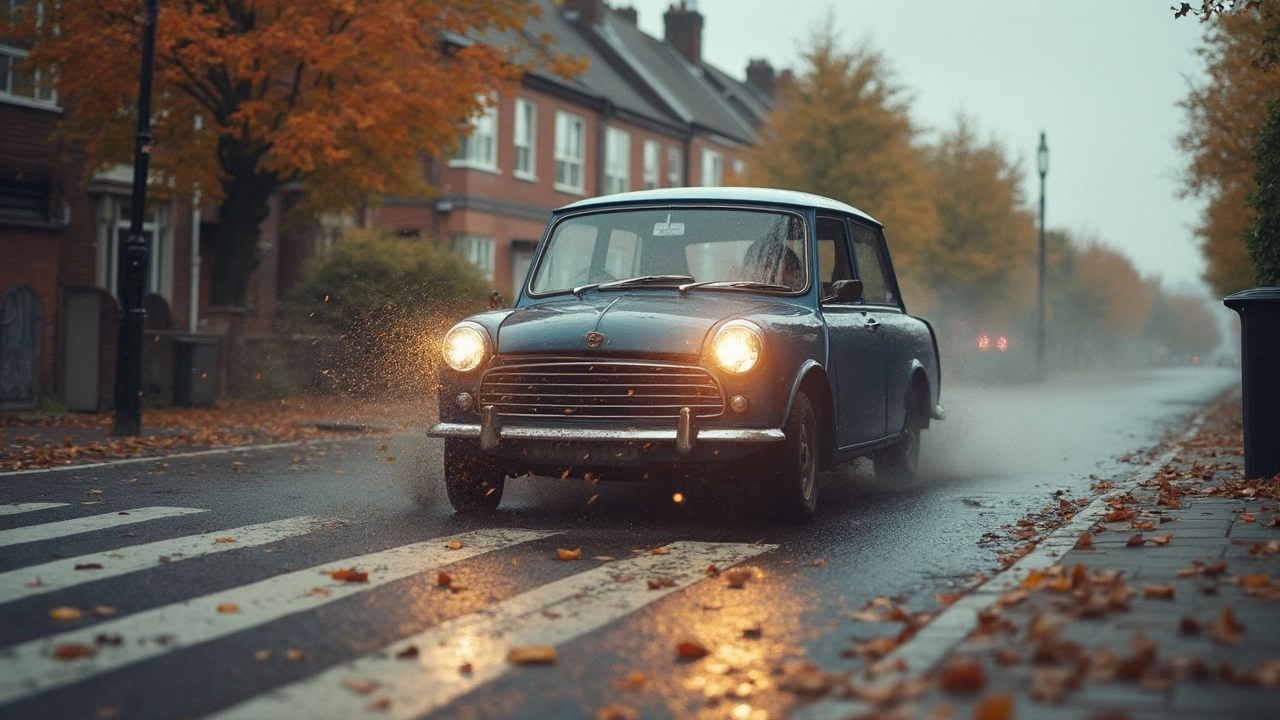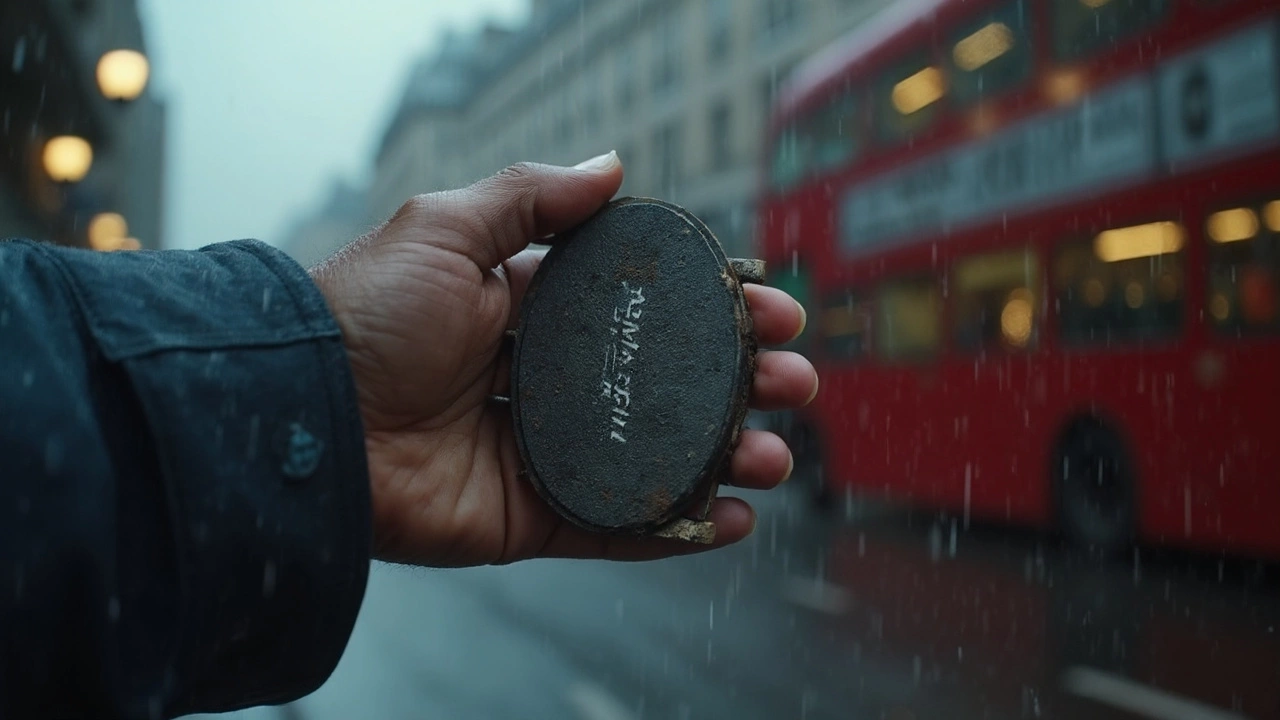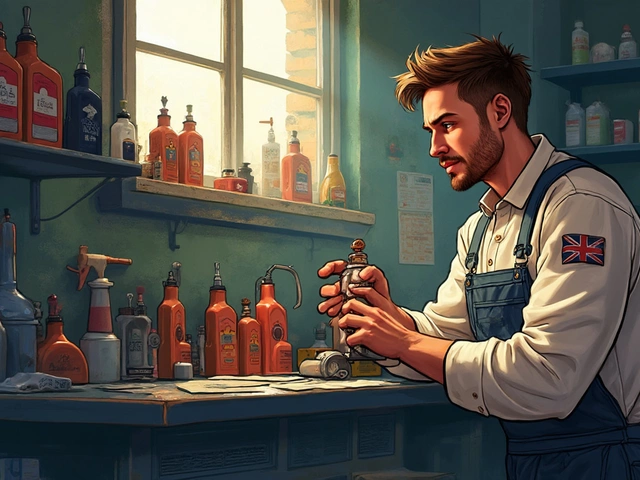Bad brake pads are like shoes with holes in the soles—you might get from point A to B, but you’re taking a big risk. When your brake pads are shot, your car can’t stop as fast as it should. The real problem here isn’t just money, it’s your safety and everyone else’s on the road.
Ever slammed on the brakes and felt your car take longer to stop? That’s often because the pads are too thin or damaged. Ignore it and you’re asking for trouble. The distance it takes to stop grows, even in ideal weather. Toss in rain or traffic, and you’re looking at close calls turning into fender benders—or worse. Waiting too long can also damage your rotors, which costs way more to fix than just replacing pads.
If your brakes squeal, grind, or make that awful metal-on-metal sound, pay attention. That noise isn’t just annoying—it’s your car begging for help. Sometimes you won’t even hear a sound, but your steering wheel might shake, or you’ll notice it takes more effort to press the brake pedal. Don’t just turn the radio up and ignore it—those signs don’t go away on their own.
- Why You Should Care about Brake Pads
- What Happens When Brake Pads Go Bad
- How to Spot Worn Brake Pads
- Smart Moves: What to Do If Yours Are Bad
Why You Should Care about Brake Pads
Most drivers barely think about their brake pads until something sounds off. But these small parts literally keep you out of trouble every time you hit the brakes. Bad brake pads don’t just mean squeaks—they mess with your ability to stop fast, especially in unexpected situations where a few feet can make a huge difference.
Check this out: According to the National Highway Traffic Safety Administration (NHTSA), bad brakes are a factor in about 22% of all car crashes caused by mechanical failure. That’s a huge chunk, considering that regular brake pad swaps aren’t all that expensive or complicated.
When you drive with worn brake pads, the metal parts of your brakes end up rubbing directly against each other. Here’s why you should care:
- Your stopping distance increases (way more than you think).
- Brake failure is real—if the pads wear down enough your brakes might stop working altogether.
- It gets pricey fast—ruined rotors and calipers can cost hundreds more to fix than just pads.
- Your car might not pass safety inspections, and that’s a pain if you rely on it daily.
One major study actually measured the difference in stopping distances between good and worn brake pads in average sedans:
| Condition | Dry Road (60-0 mph) | Wet Road (60-0 mph) |
|---|---|---|
| Healthy Pads | 121 ft | 131 ft |
| Worn-Out Pads | 167 ft | 186 ft |
That’s a gap bigger than a school bus—plenty of distance to turn a near-miss into a crash. Skipping brake pad changes isn’t just a minor mistake; it’s a gamble with both your wallet and your safety.
What Happens When Brake Pads Go Bad
When brake pads start to wear down, your car’s stopping power takes a serious hit. It’s not just about a little extra noise—the whole braking system has to work harder just to slow your car. That means longer stopping distances, shaky stops, and sometimes total brake failure if you push your luck too far.
The main job of brake pads is to squeeze against the rotor and create friction to stop the car. When there’s not enough pad left, the metal underneath can grind directly against the rotor. That metal-on-metal contact wears down the rotors quickly, racking up your repair costs. In extreme cases, you can even damage your calipers and wheel bearings—way more expensive fixes than just changing pads.
So how badly does it actually affect stopping? Check out these numbers in normal driving conditions:
| Brake Pad Condition | Average Stopping Distance (from 60 mph) |
|---|---|
| Good | 120 – 140 feet |
| Moderately Worn | 150 – 180 feet |
| Severely Worn | 200+ feet |
Those extra feet can make the difference between a safe stop and hitting someone. And if it’s wet or icy outside, stopping takes even longer.
What about your wallet? Bad brake pads don’t just mess with safety—they drive up costs. Replacing rotors is usually double or triple the price of just new pads. Ignore them long enough and you might have to fix the entire brake system. And get this: damaged brakes can even be used as a reason to deny accident insurance claims. That’s a headache you don’t want.
One more thing—cars with bad brake pads are way more likely to fail annual safety inspections. Skip the fix, and you might get hit with fines or even have your car banned from the road until you get it sorted.
- If you notice brake warning lights, grinding sounds, or your car pulling to one side—don’t wait. Get it checked out right away.
- Some cars have brake wear sensors built in. If your dashboard flashes a warning, that’s your sign to replace the pads.

How to Spot Worn Brake Pads
If you’re worried about your brakes, a few clues can save you from a sketchy situation. You don’t need to be a mechanic to catch these warning signs. Let’s keep it simple and check what’s easy to spot before you end up with a pricey repair.
- Brake pads under 3mm thick: If you peek through the wheel spokes and see less than a quarter of an inch left on the pad, it’s time for a swap. Some shops even offer free inspections, so ask next time your car’s in for anything.
- Squealing or screeching sounds: Most pads have a metal wear indicator that squeals when the pad is thin. If you hear it every time you brake, don’t wait it out.
- Grinding noise: This isn’t just annoying. It usually means the pad is completely gone and the metal caliper is hitting your rotor—which turns a cheap fix into an expensive one fast.
- Dashboard warning lights: Many newer cars flash a brake warning light if the pads are below the safe limit. Don’t ignore dashboard alerts, even if the brakes still ‘feel’ okay.
- Pulling, shaking, or odd pedal feel: If your car tugs to one side when braking, or you feel vibrations through the brake pedal, it often means there’s uneven pad wear or even damage to other parts of your braking system.
Want to check them yourself? Park on a flat spot, pop off your wheel (if you’re handy), and look at the brake pad sitting next to the metal rotor disc. If you can barely see the pad or it’s unevenly worn, call your repair shop or get a fresh set before heading out on a long drive.
Smart Moves: What to Do If Yours Are Bad
If you suspect your brake pads are shot, don’t just cross your fingers and hope for the best. There’s a smart way to handle this, and the sooner you get on it, the better for your wallet and your safety.
Here’s what you should actually do if your bad brake pads are holding you back:
- Stop driving unless you absolutely have to. Seriously—if your brakes are grinding or barely working, every mile risks your life and can wreck your car’s rotors. AAA says brake failure causes around 22,000 crashes a year in the U.S., so it’s not just in your head.
- Check your brake fluid. Low brake fluid can sometimes mean your pads are gone or there’s a leak. Top up if needed, but don’t ignore the underlying issue.
- Book a brake inspection. Most shops and dealerships check brakes for free or a small fee. Don’t wait until payday—this is one fix that can't wait.
- Replace both sides at once. Don’t just swap out the pads on one wheel. Uneven wear messes with your car’s ability to stop straight, and it’ll wear your new pads faster.
- Stick to recommended brands or OEM parts. Super cheap pads will get you back on the road, but they might wear out way sooner or even damage your rotors. Spending a little more now saves you headaches later.
Curious how much you’re looking at money-wise? Check out these national averages:
| Service | Average Cost | Time Needed |
|---|---|---|
| Brake Pad Replacement (per axle) | $150 - $300 | 1-2 hours |
| Brake Rotor Replacement (per axle) | $200 - $400 | 1-2 hours |
| Brake Fluid Top-Off | $20 - $50 | 15 minutes |
Pro tip: If you’re handy, changing brake pads is a doable DIY project. But only try it if you know your way around a wrench—get it wrong and you’re risking way more than a few bucks. Even if you leave it to the pros, stay in the loop. Ask them to show you the old pads so you know they actually did the work.
In short, when it comes to your brakes, fast action is always the right move. Waiting it out doesn’t save money or stress—it just stacks the odds against you every time you get behind the wheel.




